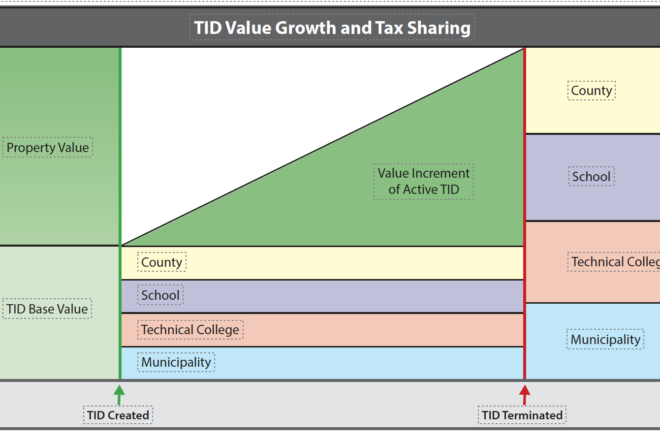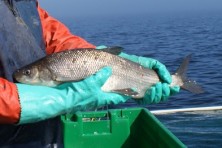A Performance Snapshot of Sturgeon Bay’s Existing TIDs
- Share
- Tweet
- Pin
- Share

Sturgeon Bay has five active Tax Increment Financing Districts (TIDs). The fifth was approved in September 2021 to finance developer incentives and improvements in the former Sunset School property and neighborhood, so no financials are yet available.
A sixth is also on the verge of being approved for Egg Harbor Road, and a seventh is in the conceptual stage to support new housing near Target.
TIDs enable municipalities to finance public works improvements and provide developers with financial incentives to construct projects. In theory, property values are then increased within the district and all taxing authorities and taxpayers win once the TID terminates.
The Wisconsin Department of Revenue tracks the performance of all TIDs across the state. Below is a synopsis of the latest performance of Sturgeon Bay’s TIDs.
• TID #1: Industrial Park. Mandatory termination date is 2028. It’s expected to end with a surplus of $794,974. Expenses will have been $7,106,387, and revenue $7,499,844. The property within this district was valued at $9,634,200 when the TID was created in 1991. As of 2021, the district’s property value was $46,586,200: a $36,952,000 increase.
• TID #2: Eastside Waterfront Redevelopment. Mandatory termination date of 2031. It’s expected to end with a surplus of $14,105,135. Expenses will have been $15,158,599, and revenue $26,108,309. The property within this district was valued at $16,123,000 when the TID was created in 1994. As of 2021, the district’s property value was $58,366,600: a $42,243,600 increase.
• TID #3: Wiretech Redevelopment. Mandatory termination date of 2035. It’s expected to end with a surplus of $462,795. Expenses will have been $1,509,470, and revenue $1,120,439. The property within this district was valued at $916,900 when the TID was created in 2008. As of 2021, the district’s property value was $3,937,000: a $3,020,100 increase.
• TID #4: West Waterfront Redevelopment. Mandatory termination date of 2040. It’s expected to end with a deficit of $1,492,907, with the expected revenues of $6,923,811 not covering the anticipated total expenses of $8,914,715. The property within this district was valued at $415,900 when the district was created in 2013. As of 2021, the district’s property value was $4,664,400: an increase of $4,248,500.
Of the four districts, only TID #4 is projected to end with a deficit. If the others do end with surpluses as projected, “whatever is left is disbursed back to the taxing districts,” said Valerie Clarizio, Sturgeon Bay finance director/city treasurer.
TID#2 on the State’s Stressed List
TID#2 is slated to terminate with a surplus, paying of its debt by the mandatory closing date of 2031 (the expected closing date is 2025). Yet it’s on the state’s “stressed or severely stressed” list. Its presence there was part of an intentional strategy, as explained by Marty Olejniczak, Sturgeon Bay’s community development director.
Following the Great Recession of 2007-2009, a number of TIDs around the state were in trouble financially. The state had also tweaked its formula for determining the value with a TID, which gave some TIDs less revenue to pay off debt. Those two issues, Olejniczak said, caused the legislature to enact a law that allowed a TID to be extended for up to 10 additional years. The law had a sunset timeframe, intended only for TIDs harmed by the formula tweak and/or recession, and is no longer an option.
But when the law was on the books, Sturgeon Bay decided to use it to declare TID#2 stressed.
“It was harmed by the value formula tweak and by the stoppage of development within the former PBI Shipyard after the recession,” Olejniczak said. “The district also took on additional debt due to the Oregon Street Bridge approaches, which the city had to pay for as the state only covered the actual bridge from water’s edge to water’s edge. So, it made sense for TID #2 to be distressed.”

